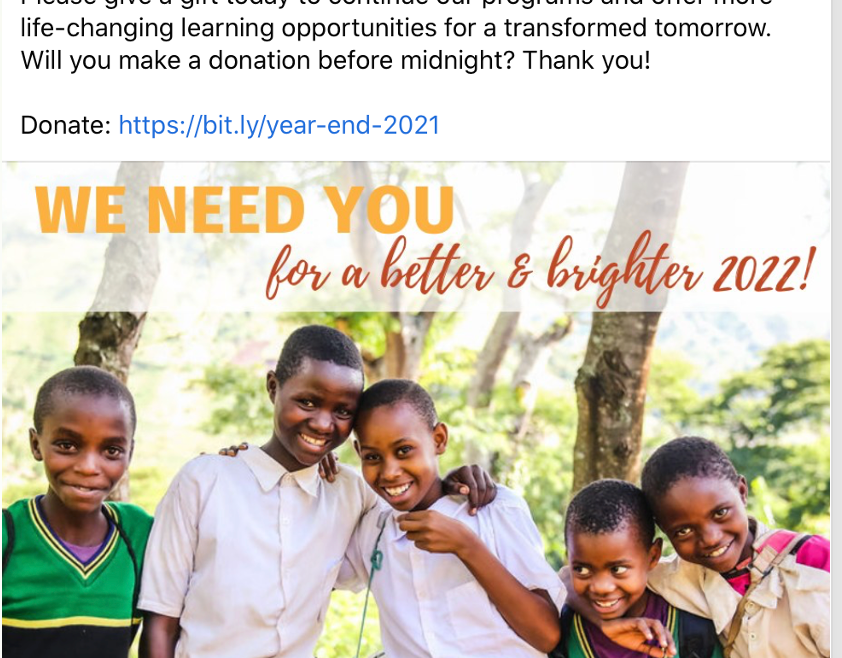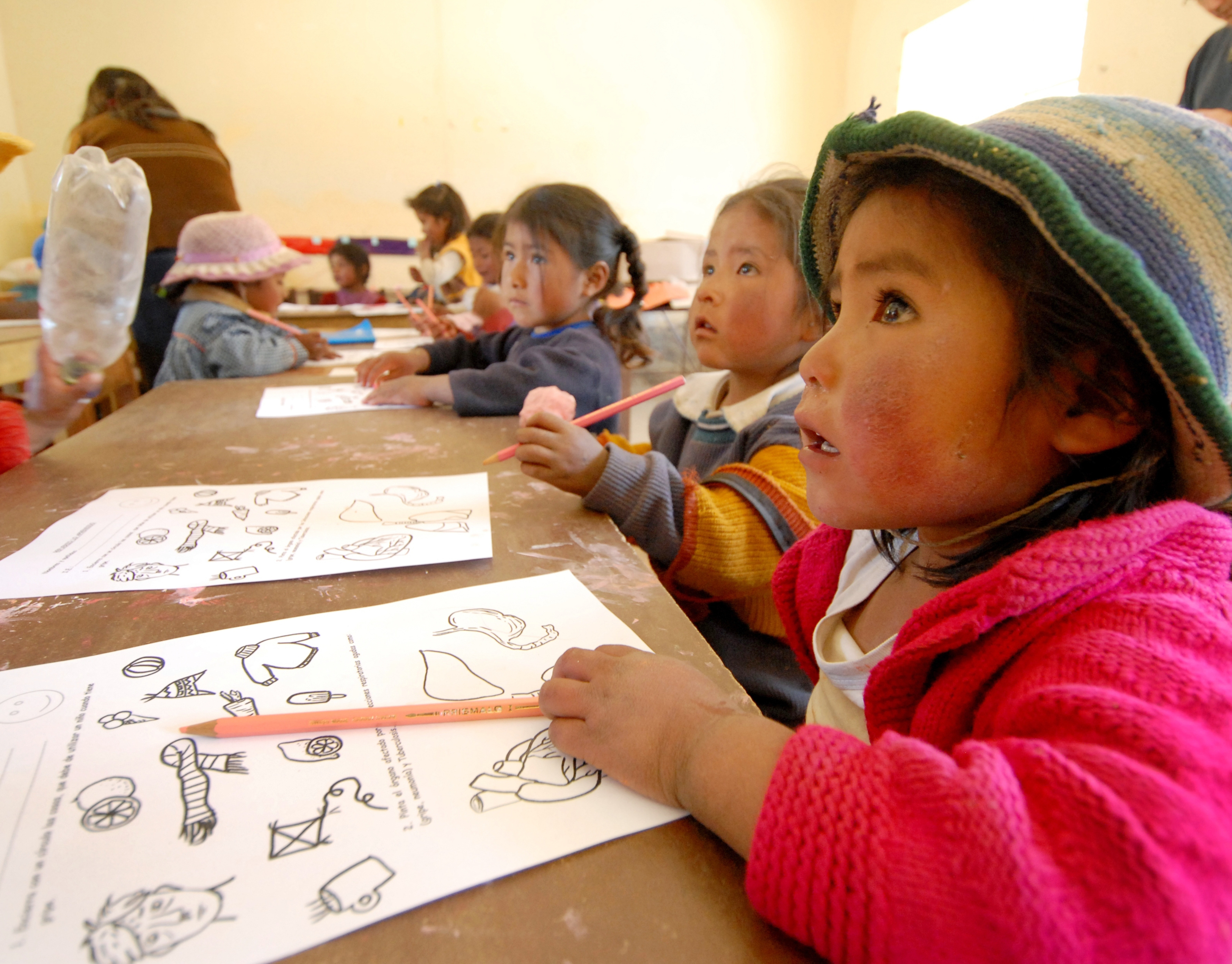Advice From Funders: Interview with the Jared Polis Foundation
Amanda: Today, I’m with the Jared Polis Foundation meeting with Gina Nocera. Good morning.
Gina: Good morning.
Amanda: Gina, could you tell me a little bit about the foundation’s four interest areas and the types of gifts that this foundation gives out?
Gina: Sure. First of all, I guess I would start by delineating between the foundation and Jared’s Gift Fund. The Jared Polis Foundation, which you can learn more about at jaredpolisfoundation.org, is a private operating foundation that started in 2000, and we really run programs or support programs and charter schools that we founded. That is not the grant-making arm of Jared Polis, the philanthropist. The Jared Polis Foundation is separate, and his actual grant-making arm is here at The Community Foundation in Boulder County. We have a donor advised fund here and we call it the Jared Polis Foundation Gift Fund. Let’s delineate between those two, and through the gift fund our four focus areas are education, health, or healthcare, environment and diverse communities. The diverse communities’ piece…we wanted to leave somewhat open. We don’t want to be too narrow in our giving and so when I say diverse communities, we really focus on the Jewish communities, the LGBT communities, the Latino communities, or any diverse community as far as ethnically speaking. Anything around basic needs falls under our focus area.
Amanda: Can you tell me a little bit more about health then?
Gina: Health is interesting. That’s probably our least competitive focus area. We’re always looking to receive more applications. When we talk about health, we really want to support people who are low income, unemployed, working poor, children, mothers, people who need healthcare and don’t have access to it. We really like to support groups that provide direct services, not necessarily advocacy groups, and I would say that’s the case in all of our focus areas.
Amanda: Ok, what about disease and disability? Does this fall within your health program, or is it more for public healthcare?
Gina: If they are providing a direct service for the target population that I mentioned, around disease or a disability, I think that they could fall into that category. And because it is our least competitive area, they have a better chance of being funded if it seems a little loose.
Amanda: Ok, thank you. So can you tell me, what was maybe the most interesting project or the most innovative program that this foundation funded in the last year?
Gina: In many ways, there are a lot of them. It’s hard to pick one. But, one organization that really sticks out in my mind, and in our grants committee member’s minds, is a group that helped us make the decisions easily… and they are all volunteer, it’s a group that just surprised us. We were so happily surprised by Wildlands Restoration Volunteers. They are an environmental group based here in Boulder and they are completely active in getting volunteers to work on trails; to rehab the trails to make the trails habitable for people; to secure and maintain the wildlife and the ecosystems around them. I’ve seen their trucks and I’ve seen them out there and, you know, in Boulder County you think, “Ok great. I mean, of course you would expect a group like this.” On the surface, it doesn’t seem that innovative, but when you read how they present themselves…it was so pleasant and so surprising for every single committee member to read that application because we felt like we were there. They walked us through it so clearly, so succinctly, in such a way that it was a joy to actually read the application. There were no questions left unanswered, and at the end of it, we gave them what they asked for. They asked for five thousand dollars and we gave them five thousand dollars. Often times we don’t fully fund what their request is. We fund a part of it, let alone if they are a new grantee. So, it was because of the way they presented themselves with no questions. Now when I see them out, because I run the trails all the time, I know exactly what they do because of how they present themselves on paper. It was done in a way that was so genuine and sincere, they live and breathe it every day…it wasn’t done from this glossy, glitzy, “hey, we’re trying to showcase us and give you these fancy annual reports and all these pictures.” It wasn’t that. It was just the way they talked about themselves in the narrative and that every single attachment made total sense. So that was really impressive and that was in our spring cycle.
Amanda: So it was really good story-telling and covering all of the bases?
Gina: Yes! And covering all of the things we ask for. We really look at evaluation. How do you evaluate your programs? How do you evaluate what you do? Truly show us what you do, in both qualitative and quantitative ways. And when you show it to us, make it enjoyable to look at. Don’t mire it in words and footnotes…make it bullet points, make it a chart! That’s fine. But make it easy for us to understand, and I would definitely recommend having somebody outside the organization, who you know is a good communicator – a good reader, a good writer, a good analytical thinker, read that application carefully.
Amanda: So, one of the things you touched on was your review committee. I want to ask you a little bit more about that. Tell me, who’s on your review committee and how does that process work?
Gina: Sure. We’re a little unique in many ways. I mean, our philanthropist is unique. You know, Jared Polis is our congressman here in CD2…congressional district 2. He’s always been an entrepreneur. He became wealthy very young. He’s always been involved in philanthropy and giving, and he’s always been involved in politics. When he actually ran for congress and won, he had to step back. So, he and I had conversations about it…and what we decided to do was: I would continue to manage his grant-making through his donor advised fund here at The Community Foundation, but that I needed support to help me with that...to make sure we were being as transparent and objective as possible. So we chose folks who we trusted and knew, who we would have good relationships with. And I chose a community banker here in the area who has worked with Jared on different aspects of his giving in the past, and he had a great relationship with her and so do I. She also helps with her bank giving, so she understands philanthropy in that aspect. I chose two program officers, one from The Community Foundation and one from a family foundation because they understand the whole funding process. And then I chose a consultant. We needed an expert on the environment since that is one of our focus areas, so there was that political, governmental, environmental piece. We chose people who love our committee, and we kept it small. We kept it diverse in terms of points of view, and we all got along and we all were getting on the same page and just keep it about the grants and about the giving…. We’re learning a lot as a committee.
Amanda: It sounds like you have some experts from different areas that can look at the proposals with different eyes to see where the strengths are, can you tell me a little bit about…what are some of the biggest problem areas that you see, or what’s the most common reason that a proposal would get turned down?
Gina: Well, I think a couple of the things are when they actually get to the proposal point, if they made it through the LOI process, I always tell organizations it’s still competitive where we have a finite amount of money to donate every cycle. One of the things that stands out is their evaluation section. We want to see that they actually evaluate their programs, how they evaluate the programs, and the data that they collect from those programs… We want to see that a program is somewhat established and that there is some data behind it and then how they use that data – to tweak a program, or to strengthen a program…whatever it is. So that’s a big part of it for us... And then secondly, of course, we look at the budget and financial health. We’re going to look at your financials and we’re going to look at your governance structure…very closely. We’re going to say, “is the organization financially healthy? Are there any outstanding questions that we have after reviewing their current operating budget?” And sometimes, there are. That’s why I highly recommend that a budget narrative is attached to a budget.
Amanda: Thank you. I think that explains it really well. That is a clear idea of how this works. One thing I really advise non-profits to do is when they get declined, get all the information because you’ve spent a lot of time looking into that. Even if you have to say no, it can really help them learn a lot. Do you give the feedback? Gina: I absolutely do. I’m kind of a one woman shop in that respect and so when they call, they will get me. And if they don’t, they’ll get my voicemail and I’ll call them back. And actually…and I think most funders would agree with this, whether they are a small foundation or a large one, we want to hear from the organization both before they submit the application and after they submit the application. Maybe not during …because we’re in the process of compiling everything and if we need something, we’ll call them. But, I absolutely look at an organization that calls me up front and says, “here’s what we’re thinking of applying for…what do you think about that?” And they ask me all kinds of questions around, “what should we request as far as the funding range?” What’s interesting to me is if we have a history of giving with an organization and say we gave them a $5,000 grant last year and they ask for $15,000 this year and there was no call to me. That’s not strategic. Why didn’t they call and ask? Amanda: They are not building a relationship with you.
Gina: No. And we will also get those kinds of applications where it’s like…we’ve never heard from the organization, they’ve never been a grantee of ours and our range of giving is between $500 and $15,000 and they’ll ask for $15,000 for general operation. That’s not strategic on their end. There’s no thought going into it. There’s no phone call, there’s no communication. To me that sends up a little red flag.
Amanda: Ok. Thank you so much for your time. This is a lot of helpful information. Gina: Great! Thanks a lot, Amanda.










